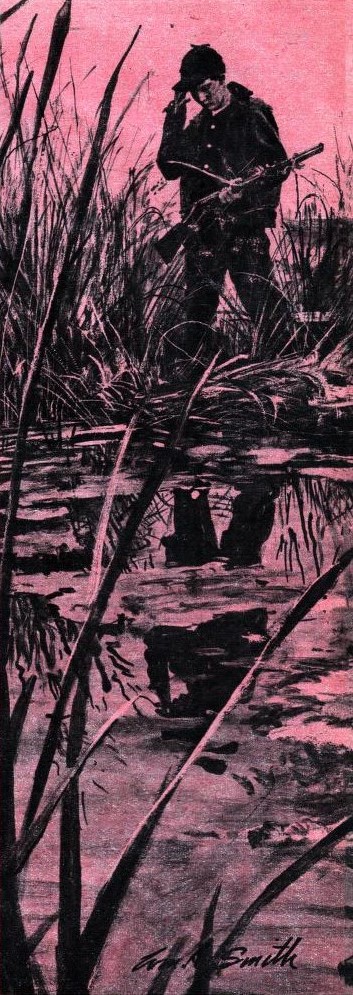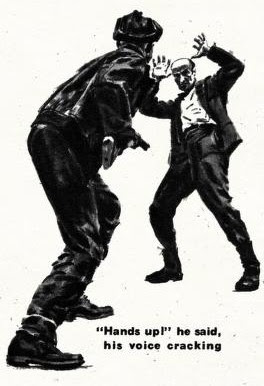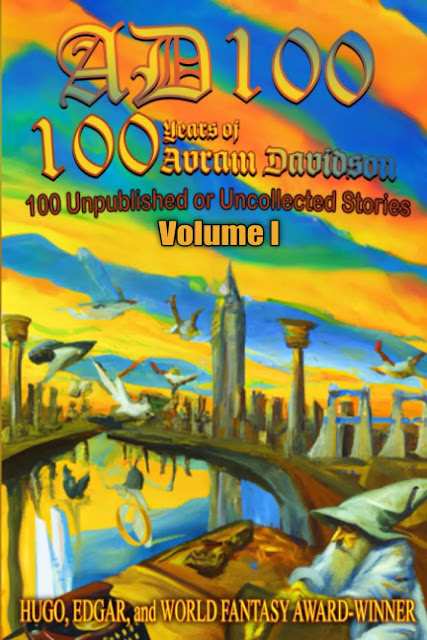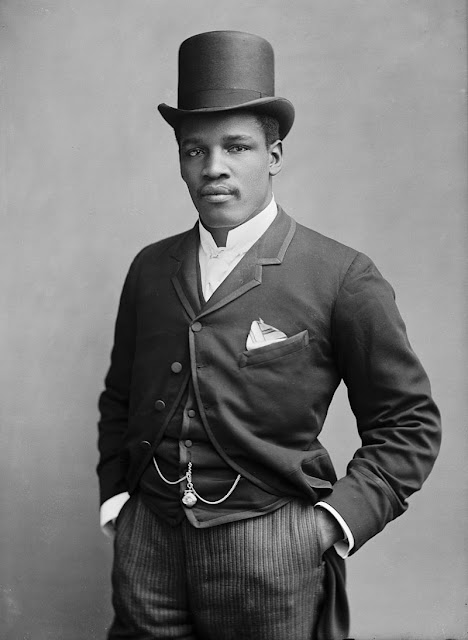(1) "Open Season for Murder."
By John Savage (?-?).
Illustrations by William A. Smith (1918-89; HERE). First appearance: This Week Magazine, October 28, 1956.
Short short story (6 pages).
Online at Archive.org (HERE; go to text page 26).
"That was the stupidest stunt you ever pulled . . ."
A RELAXING hunting trip turns deadly when a father and son stumble across organized crime—as if the wrong ammo load wasn't bad enough . . .
Main characters:
~ Jimmie Davison ("What's a market hunter?"), his father ("Nastiest criminal on earth"), Moore ("We'll freeze to death"), the second man ("a big fat guy in overalls"), and a third man ("His mouth fell open and he pulled his head out of sight again").
References (all from Wikipedia):
- waterfowl hunting (HERE) - the origin of "gypped" (HERE).
(2) "The Iron Box."
By John Savage (?-?).
First appearance: Collier's, February 7, 1953.
Reprinted in EQMM, December 1956 (today's text).
(Note: This issue also contains Avram Davidson's "The Ikon of Elijah"; IMDb HERE). Other reprints:
Ellery Queen’s Mystery Magazine (U.K.) #47, December 1956.
Ellery Queen’s Mystery Magazine (Australia) #116, February 1957.
Short story (15 pages).
Online at The Luminist Archives (HERE; go to text page 75). (Note: Text very faded and may require magnification and demagnification.)
"I think I should be the one to tell it, because Katona and his iron box changed my whole life."
IF, as they say, it takes a thief to catch a thief, wouldn't it follow that it takes a magician to neutralize one of his profession? Add to that the well-substantiated rumor that during the Cold War people disappeared who wouldn't have otherwise disappeared had there not been a Cold War. In consequence, according to our story, it looks as if there could have been at least one magician selected to disappear—at the bottom of a river . . .
Main characters:
~ Unnamed narrator ("I have always been a sucker for any kind of magician or escape artist"), Janos Katona ("a disciple of Houdini"), the gendarme ("I shall return in three hours to arrest you, if you are still here"), and Tisza ("would know how to assassinate a man without making a martyr of him").
References and resources:
- "the Seine":
"The Seine is a 777-kilometre-long (483 mile) river in northern France. . . . There are 37 bridges in Paris across the Seine (the most famous of which are the Pont Alexandre III and the Pont Neuf) and dozens more outside the city." (Wikipedia HERE.) - "a disciple of Houdini":
"You sigh and the song begins, you speak and I hear violins, it's . . ."
"Magic, which encompasses the subgenres of illusion, stage magic, and close-up magic, among others, is a performing art in which audiences are entertained by tricks, effects, or illusions of seemingly impossible feats, using natural means." (Wikipedia HERE.) - "An escape act is a curious thing":
"Escape or Die, the form of escape performance originated by Houdini, is the standard for top-of-the-line escapologists. There are at least three possible ways for an escapologist's life to be at risk from the possible failure of this escape. These are death by drowning, as in the water escapes Houdini pioneered; death by suffocation, as in escapes from airtight enclosures containing no water, such as coffins; and death by falling, as also originated by Houdini, in a straitjacket escape hanging high above the earth as when Houdini hung from cranes and buildings upside down in a strait jacket where falling would mean certain death." (Wikipedia HERE.) - "a pulley in the flies":
"A fly system, or theatrical rigging system, is a system of ropes, pulleys, counterweights and related devices within a theater that enables a stage crew to fly (hoist) quickly, quietly and safely components such as curtains, lights, scenery, stage effects and, sometimes, people. Systems are typically designed to fly components between clear view of the audience and out of view, into the large space, the fly loft, above the stage." (Wikipedia HERE.) - "from Communist Budapest to the American zone of Vienna":
"[In 1949] The Communists gained power while the Soviet Army propped up the Hungarian state. Under their auspices, the former Arrow Cross torture chambers in the prisons filled up with their opponents. Arrests, beatings or summary executions were used as a standard tool by the Secret Police, who employed an extensive net of informants. Random arrests without charge were commonly initiated by regime informants, some of these abductees were never heard from again. By this time the administration was composed predominantly of hardline communists or careerists, who made up the Soviet-accepted controllers of wealth and power. . . . The Hungarian Revolution of 1956 was suppressed, the Soviets, rather than appointing a Hungarian hardliner or a Soviet general, gave a chance to János Kádár, a former kidnapped minister of the revolution. Due to the co-operative efforts of Kádár and huge loans taken from the West to offset the failing economy, Hungary became the favorite Communist state of the West by the late 1970s." (Wikipedia HERE.) "Espionage in Austria is legal if the country itself is not the target. The city [Vienna] has about 17,000 diplomats, many assigned to international organizations. Because of their presence and Austria's neutrality, Vienna became an important center for espionage, as depicted in The Third Man; during the Cold War the city allegedly had more spies than Austrian soldiers." (Wikipedia HERE.) - "the Hungarian underground":
"The Hungarian Revolution of 1956 (23 October–4 November 1956), also known as the Hungarian Uprising, was an attempted countrywide revolution against the government of the Hungarian People's Republic (1949–1989) and the policies caused by the government's subordination to the Soviet Union (USSR). The uprising lasted 12 days before being crushed by Soviet tanks and troops on 4 November 1956. Thousands were killed and wounded and nearly a quarter of a million Hungarians fled the country." (Wikipedia HERE.) - "the other side of the Curtain":
Fifties and sixties readers would have no difficulty determining what "the Curtain" referred to:
"During the Cold War, the Iron Curtain was a political metaphor used to describe the political and later physical boundary dividing Europe into two separate areas from the end of World War II in 1945 until the end of the Cold War in 1991. The term symbolizes the efforts by the Soviet Union (USSR) to block itself and its satellite states from open contact with the West, its allies and neutral states." (Wikipedia HERE.) - "the Quai d'Orsay":
"The Quai d'Orsay is a quay [a shipping wharf] in the 7th arrondissement of Paris. It is part of the left bank of the Seine opposite the Place de la Concorde." (Wikipedia HERE.) - "Allez-y": "Go ahead."
- "a capsule of potassim cyanide":
"The effects of potassium cyanide and sodium cyanide are identical, and symptoms of poisoning typically occur within a few minutes of ingesting the substance: the person loses consciousness, and brain death eventually follows. During this period the victim may suffer convulsions." (Wikipedia HERE.) - According to FictionMags, John Savage made relatively small contributions to the slicks of the time, the 1950s, '60s, and '70s: The Saturday Evening Post (his first credit), Collier's, Esquire, Cosmopolitan, This Week, Redbook, even the Ladies' Home Journal; however, he can't be regarded as a detective fiction writer.
- The latest bona fide magician that we've bumped into would have to be The Great Merlini (HERE).
The bottom line:
Unless otherwise noted, all bibliographical data are derived from The FictionMags Index created by William G. Contento & edited by Phil Stephensen-Payne. ~~~~~~~~~~~~~~~~~~~~~~~~~~~~~~~~~~~~~~~~~~~~~~~~~~~~~~~~~~~~~~~~~~~~~~~~~~~~


%20illo.jpg)













%20(3).jpg)

%20mag%20illo.png)








%20cover,%20December%201956.jpg)


























